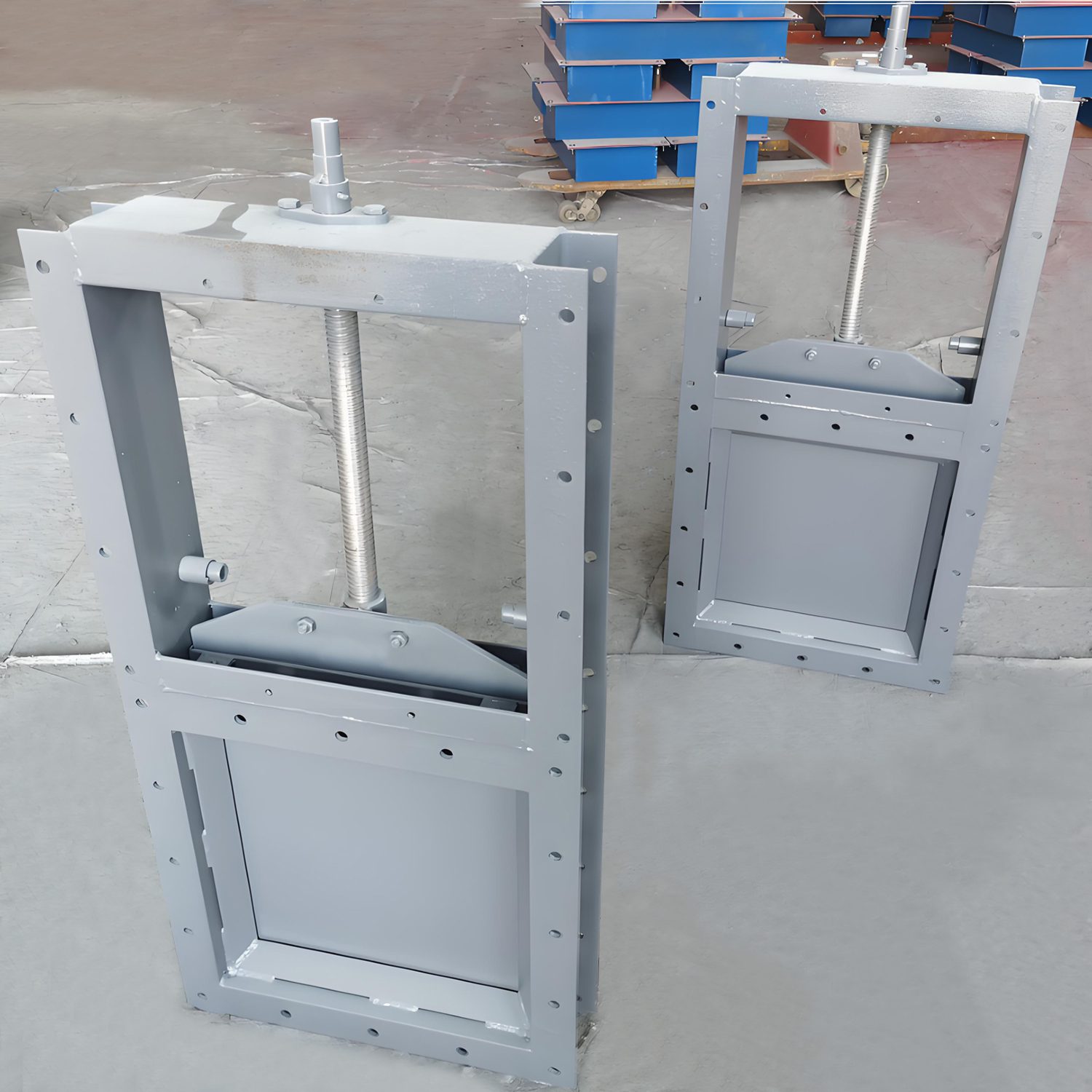A slide gate valve is a type of valve used to control the flow of fluids in various piping systems. It operates by sliding a flat gate (or disc) into and out of the flow path, effectively blocking or allowing the passage of fluids.
Classification
Slide gate valves can be classified based on several criteria, including design, operation, and application. Here are some common classifications:
1. By Design:
- Manual Valve: Operated by hand using a lever or handwheel.
- Pneumatic Valve: Operated using compressed air or gas.
- Electric Valve: Controlled by an electric actuator for precise operation.
- Hydraulic Valve: Utilizes hydraulic pressure for operation.
2. By Construction Material:
- Metal Valve: Made from materials like stainless steel, carbon steel, or cast iron.
- Plastic Valve: Constructed from materials like PVC or CPVC for corrosive applications.
3. By Flow Direction:
- Horizontal Valve: Designed for horizontal flow applications.
- Vertical Valve: Suitable for vertical flow applications, often used in hoppers or silos.
4. By Application:
- Bulk Material Handling Slide Gate Valve: Used in industries like agriculture and mining for controlling bulk solids.
- Water and Wastewater Slide Gate Valve: Designed for use in water treatment and sewage systems.
- Food and Beverage Slide Gate Valve: Specifically designed for hygienic applications in food processing.
5. By Gate Type:
- Flat Gate Valve: Features a flat gate that moves vertically.
- Wedge Gate Valve: Uses a wedge-shaped gate for enhanced sealing capability.
Highlights
- Effective Flow Control: Provides precise control over the flow of fluids and bulk materials, ensuring efficient operations.
- Versatile Applications: Widely used in industries such as agriculture, mining, water treatment, and food processing.
- Robust Construction: Typically made from durable materials like stainless steel or cast iron, designed to withstand harsh conditions.
- Low Leakage: Offers excellent sealing capabilities to minimize leakage when closed, enhancing system efficiency.
- Space-Saving Design: Compact configuration allows for installation in tight spaces without compromising functionality.
- Variety of Operation Modes: Available in manual, pneumatic, electric, and hydraulic options to suit different operational needs.
- Low Flow Resistance: Ensures minimal pressure drop, making it ideal for high-flow applications.
- Easy Maintenance: Simple design facilitates easy maintenance and servicing, reducing downtime.
Applications
1.Bulk Material Handling:
-
- Used in industries like agriculture, mining, and construction to control the flow of bulk solids such as grains, coal, and sand.
2.Water Treatment:
-
- Employed in water and wastewater treatment plants to manage the flow of water and sewage, providing effective isolation and control.
3.Food and Beverage Industry:
-
- Utilized in processing plants to control the flow of ingredients and ensure hygienic operations.
4.Chemical Processing:
-
- Applied in chemical plants for controlling the flow of various liquids and powders, ensuring safety and efficiency.
5.Power Generation:
-
- Used in power plants for regulating the flow of cooling water and other fluids in the system.
6.Pharmaceuticals:
-
- Employed in pharmaceutical manufacturing to control the flow of active ingredients and ensure compliance with hygiene standards.
7.Mining Operations:
-
- Used to manage the flow of ores and other materials in mining and mineral processing applications.
8.Cement and Aggregate Industries:
-
- Utilized to control the flow of cement, lime, and aggregate materials for construction purposes.



